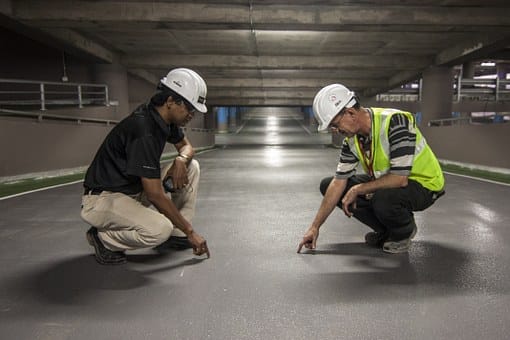
As a real estate purchaser, developer, or seller, you may wonder: “Do I really need a Phase I environmental site assessments (ESA) before purchasing property?” The answer is simple: yes!
As we explain on this page, a Phase I ESA looks into the history of a property. This benefit alone – of environmental due diligence – greatly outweighs the costs. A Phase I ESA does a whole lot more: it can protect a purchaser, developer, or seller from liability under the Comprehensive Environmental Response, Compensation, and Liability Act (CERCLA). Additionally, the resulting report provides real, actionable information that can significantly help manage risk and anticipate project cost items as part of future proposed land use. To get a better sense of the benefits of Phase I ESAs, here are 5 things to know:
1. You’re vulnerable without it: Phase I ESAs are the bare minimum requirement that a prospective purchaser of commercial real estate must complete to attain the exemption to liability, under the strict liability, federal Superfund law, known as bona fide prospective purchaser protection. To qualify, a person must follow the All Appropriate Inquiries (AAI) Rule by looking into the previous ownership and uses of the property consistent with good commercial and customary practice as defined in the CERCLA, 42 U.S.C.§9601(35)(B)(i). As of December 31, 2013, the Environmental Protection Agency finalized a rule that the “ASTM Standard E-1527-13” is a standard by which parties may comply with the AAI Rule. Since the ASTM Standard is copyrighted, we cannot post a copy here. However, you can read a summary by clicking here. Under this standard, undertaking a Phase I ESA ensures that a land purchaser, developer, or seller is AII compliant.
2. No holes! No data! Phase I ESAs only evaluate the potential for whether contamination may be present, not whether contamination is actually present. Therefore, when property owners you’re trying to buy property from resist your undertaking Phase I ESAs, explain that they do not require invasive sampling. The investigation will not be intrusive unless a recognized environmental condition (REC) is identified. We have explained some of the top recognized RECs here. Additionally, a Phase I ESA will not yield lab data, so it is therefore highly unlikely that the ESA will result in a reportable condition, something that property owners fear above all.
3. Worthwhile investment ($3,000-$8,000): Phase I ESAs vary in cost, from $3,000 on the low end to $8,000 on the high end. The biggest factors are quality of consultant, size of property, and geographic location. However, without a Phase I ESA, real estate investors and developers cannot qualify as a bona fide prospective purchaser and would therefore be left vulnerable to CERCLA liability. The attorneys at Periconi, LLC always advise incurring this cost as basic to the process and can provide referrals to consultants that best fit your budget.
4. ESAs become stale: Old reports are just that – old and outdated, and not representative of the current situation. Under the applicable guidance standards, Phase I ESAs performed more than six months prior to closing are not AAI compliant. If your Phase I ESA report is more than six months old, you should ask your consultant to provide an “update,” which is simply an amendment to the report. The consultant will then submit new FOIL requests to administrative agencies, obtain updated regulatory database reports, and may request to conduct another site visit.
5. Not a legal document: Phase I ESAs are prepared by environmental consultants-typically engineers or geologists, or often a team comprised of both. Though the consultants are technical experts, they cannot provide legal opinions or legal recommendations. For this reason, property investors and lenders have Phase I ESAs reviewed by attorneys. The attorneys of Periconi, LLC have reviewed hundreds of Phase I ESA reports and prepared many Attorney Review Letters (ARLs) or less formal reviews, as needed. As we have explained here, an ARL synthesizes investigation reports that typically run from dozens to hundreds of pages to a handful of pages. They also make sense of the most important information for other parties with an interest in the transaction – lenders and insurance underwriters, for example.
Phase I ESAs are essential for commercial real estate transactions. They provide real estate purchasers, developers, or sellers with a very inexpensive “insurance policy,” and can be extremely informative. Contact the attorneys of Periconi, LLC if you are considering a Phase I ESA and need recommendations for a consultant, to review your environmental due diligence reports, or for more general information regarding environmental investigations.
Contact the attorneys of Periconi, LLC at 212-213-5500 if you are considering a Phase I ESA and need recommendations for a consultant, need an attorney to review your environmental reports, or for more information regarding environmental due diligence in real estate transactions.

